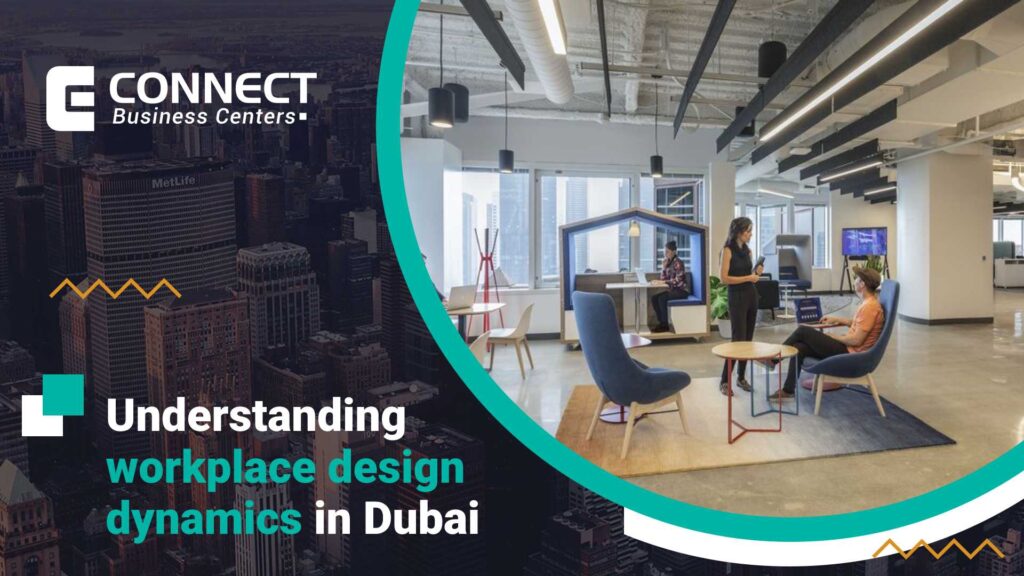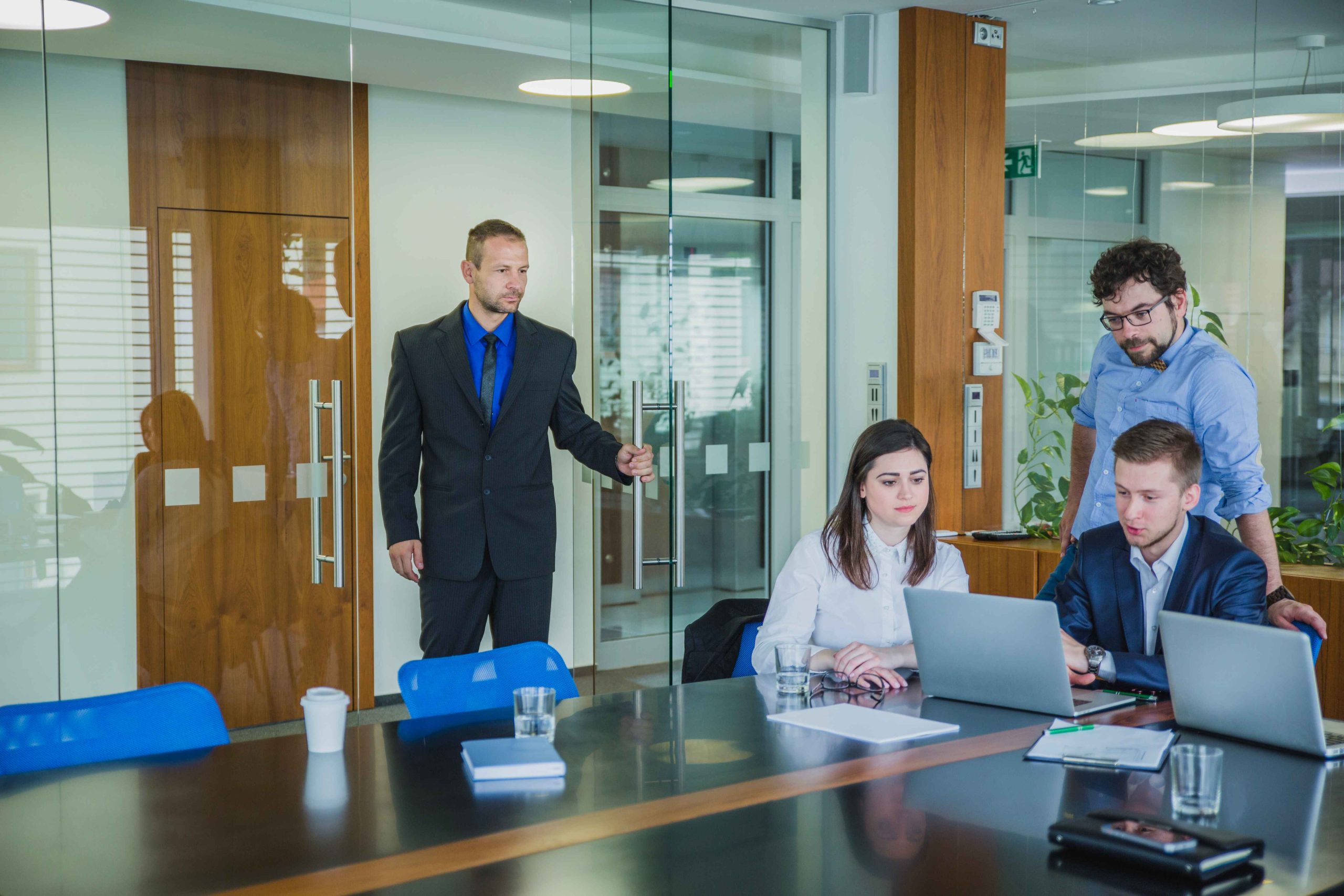The workplace is the place that a worker occupies when performing a task. Therefore, the workplace must be designed in an ergonomic and preventive way, to avoid illnesses related to poor working conditions, as well as to ensure that work is productive.
In this article, we will explain that the position must be taking into account the worker and the task to be performed so that it is carried out comfortably and efficiently. However, the design must include all the elements that make up the work system, including aspects related to the physical environment and work organization.
- What is workplace safety?
- What is the process for the design of the workplace?
- Is there a purpose for improving the design of the workplace?
- What atmosphere do you want to create in the office?
- What is the style of the office?
- Balance and scale of the elements of your office
- What are the new trends in office design?
- How can we help you get more information about workplace design dynamics in Dubai?
1. What is Workplace Safety?
If the workstation is properly designed, the worker will be able to maintain a correct and comfortable body posture, thus avoiding possible back injuries, circulation problems in the legs, etc.
The design of a new workplace, or the redesign of an existing one, entails a procedure that consists of several stages. The intervention of the ergonomists should not be realized after the important decisions have been made (at the end of the process), but before, trying to solve the design problems.
Ergonomics must be present from the beginning of the design process and intervene in all its stages. A close collaboration between the designer, engineer, and ergonomist is recommended. However, it is important that all decisions made during the design process take into account the complexity between engineering and human factors.
The main stages that make up the design process:
- System analysis. This stage entails the identification of the main operations that have to be carried out to obtain the required results and the selection of the necessary work system for it.
- Assignment of tasks. In this stage, the most appropriate distribution of the different tasks between the technical system and the operator is decided according to different criteria: efficiency, safety, quality, etc.
- Specification of the system. On the one hand, it is about designing the most suitable physical configuration and selecting the necessary technical devices; on the other, defining the work procedures for the human operator.
- An evaluation of the design is carried out through prototypes and simulations, and the required improvements were also introduced.
- Workers must be informed of the objectives that are intended and the changes that are going to be carried out. If necessary, these workers should also be trained and coached.
2. What is the Process for the Design of the Workplace?
The general office design procedure has an iterative character. The analysis and synthesis of the required work system, usually reviewing the successive stages several times to achieve a satisfactory solution or to obtain several solutions, from which the best one can finally be chosen.
Decisions to be made in the design process often involve trade-offs. However, when it is not possible to adopt an optimal technical solution from an ergonomic point of view, it will be necessary to carefully weigh the consequences, especially if the limits established by ergonomics for people are exceeded.
In the design or redesign process, the contributions and points of view of the workers/users constitute very valuable information that must be collected and treated appropriately by the designers. The environment can influence the creativity and productivity of people. Furthermore, learn here some essential tips for office interior design.
If you want to create practical, functional, and aesthetic spaces, surely you must be asking yourself, how much time and money do you have to invest? The reality is that this depends on several aspects and on each company.
The interior design of offices can range from renovating the furniture, changing the decoration, or starting a furnishing project for your entire workspace. But first, you need to take these considerations into account.
3. Is There a Purpose for Improving the Design of the Workplace?
The idea is to plan the interior design of the office based on the needs and interests of the users, to make them more efficient and improve worker well-being. In addition, to achieve this, you must take into account 3 fundamental aspects:
3.1. What tasks will be performed in the work area?
First of all, you must define what use will be given to the place you are going to design. For example:
- How many people will occupy the space?
- What is your position or job title?
- What will your daily duties be?
- Do they need to work together or separately?
- Do they require a quiet environment?
Once the objective of the space is clear, we can move toward the necessary elements such as the number of desks, chairs, lighting, and storage furniture.
In addition, it is advisable to consider the possibility of the workforce growing and how to adapt the space and furniture to this change. To do this, you can rely on a designer who will give you guidance on the most convenient option.
3.2. Budget
Once you have established your interests and before making any investment, you should consider how much money you have, since there is a wide variety of options and prices in the market. Also, take into account:
- If the company has certifications
- If the furniture is sustainable
- They have a guarantee
Remember that office interior design is a project that must be careful and, even if it involves a considerable investment of time and money, you will have great results in the long term.
3.3. Deadlines
Another important factor in order not to affect or stop the operation of your company is to consider how much time you have to deliver the project.
However, the time needed to finalize the design of your office depends on many variants, including:
- If the space requires modifications (electrical installations, knockdown walls)
- Term and conditions of delivery of the furniture (guarantees, if it includes the installation)
- The dimensions of the place
- If the project is for a partial or total renovation of the space
- If you have hired a designer or furnishing expert, it is easier to plan your purchases correctly and get closer to what you have in mind according to your budget.
4. What Atmosphere Do You Want to Create in the Office?
The interior design of offices can be very versatile, since an organization has several departments, with different functions, objectives, and work rhythms.
Choose practical elements that reflect the identity of your brand and give personality to your space: straight lines and neutral colors convey sobriety and the most striking tones inspire creativity.
For example, in a telemarketing office, users talk a lot on the phone and require elements that isolate sound such as screens and headphones, as well as workstations with a certain degree of privacy.
In a sales department, on the other hand, employees are likely to receive clients and need large, executive-style desks, file cabinets, and professional and more elegant decor.
5. What is the Style of the Office?
The interior design of an office can adopt different styles according to the corporate culture and can even combine several in the same company. Know the characteristics of some of the most used styles:
5.1. Classic office
The classic style mainly uses wooden furniture with curved lines, whose design is elegant and denotes status. In addition, the decoration usually includes natural plants, patterned or plain rugs, paintings, and chandeliers.
5.2. Modern office
Modern offices promote creativity and collaboration among employees through attractive and inspiring designs. They regularly use glass and cladding, as well as open and co-working spaces.
5.3. Minimalist office
Its premise is simple. For example, straight lines, white, gray, and black colors, together with a sober decoration are characteristic of this style.
5.4. Industrial-style office
In these spaces, materials such as wood, metal, and concrete predominate. In addition, the structural elements are in sight: pipes and electrification systems.
5.5. Collaborative office
Nowadays, it is very common to use shared or co-working spaces to save costs and improve the interaction between employees. For example, large tables, sofas, attractive decorations, and striking colors are key elements in collaborative offices.
6. Balance and Scale of the Elements of Your Office
The interior design of an office can have many forms of organization and distribution of space and furniture, according to the number of users and their functions.
Ideally, the environment should be neat, clean and give a feeling of spaciousness with the help of colors and lighting. For example, if it is for several users, it is best to use modular systems that optimize space.
To achieve pleasant environments, follow these tips:
- When locating your workstation, try to leave a space of 1.5 meters (with respect to the wall or the closest user) so that you can move around without any problem.
- Place your computer perpendicular to the windows to avoid light reflections and, preferably, in the middle of your desk to have free space.
- Shelves, file cabinets, and bookcases help in the decoration, division, and organization of offices.
- Your work desk and chair should be ergonomic to suit your daily needs and tasks.
During a project of this type, it is essential to know first-hand the needs and objectives of those who are going to use the place in order to optimize the space, reduce costs and correctly distribute the furniture and other elements.
The interior design of offices can give your company personality and modernity. But, the most advisable thing is to approach an expert who will provide you with the best and most up-to-date solutions.
A designer, for example, maybe the best option to settle your ideas and provide you with guidance. In addition, remember that the furniture must be adaptable to the changes that your organization may undergo: new workplace dynamics, staff growth, and modification of hierarchies.
7. What Are the New Trends in Office Design?
The COVID-19 pandemic accelerated a series of paradigm shifts that affect the way we work. A survey indicates that 95% of executives see the hybrid model as permanent.
While last year showed us that operating from home is possible and that the model has its advantages, this time also proved that the office remains a fundamental space that allows interaction with colleagues and the physical manifestation of the company’s identity, and the sense of community.
That is why employee and business expectations of offices are changing. The workplace has been a hub for collaboration and productivity, and the design of the space needs to evolve to support this transformation.
These are the most important trends in office design:
- Health and wellness first. Today, workspaces that prioritize health and safety are essential for all types of businesses. Not just those that are at the center of the health and food industries, for example. Furthermore, optimized climate control systems, better cleaning, and design modifications allow the creation of social distance, which has become essential for any business.
- A flexible space for interaction that does not happen online. The office needs to be optimized for work activities and social interaction that cannot happen at home. Also, there is no mold, and each company must understand what type of space best suits their needs. Some will prioritize presentation spaces, soft seating, and breakout areas designed to encourage sharing of experiences. Others will require more individual space for focused work, with people who need silence and concentration.
- Spaces prepared for remote work. To facilitate a highly efficient hybrid work model, offices must be prepared to connect with those who are far away. However, that is why meeting rooms must be equipped with the latest technological solutions in terms of connectivity and video.
8. How can we help you get more information about workplace design dynamics in Dubai?
When it comes to renting offices in Dubai, Connect Business Centers is your best option. We are here to help you get through this as quickly as possible. Our firm is to be the link that connects you to your ideal space.
We have been in the rental business for more than two decades, providing lease options to businesses of all sizes. We have a large range of executive office spaces to pick from, so you may find one that meets your needs. Our representatives are experts at finding, evaluating, and negotiating the best places to work in Dubai.

Connect Business Centers
![]() Connect Business CentersConnect business centers is a real estate marketplace dedicated to helping homeowners, home buyers, sellers, renters and agents find and share information about homes, real estate and home improvement.
Connect Business CentersConnect business centers is a real estate marketplace dedicated to helping homeowners, home buyers, sellers, renters and agents find and share information about homes, real estate and home improvement.




